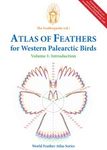![Secondary Contact Zones of Birds in Northern Iran Secondary Contact Zones of Birds in Northern Iran]()
Click to have a closer look
About this book
Customer reviews
Related titles
About this book
Language: English with bilingual summary in English and German
Members of several pairs of avian species and megasubspecies established contact in northern and northeastern Iran where they either met without gene exchange or hybridized to a greater or lesser extent.
The Mediterranean Black-eared Wheatear (Oenanthe hispanica) and the central Asian Pied Wheatear (O. pleschanka) are ecological counterparts in the western and eastern Palearctic Region, respectively. They established contact in eastern Bulgaria, Transcaucasia, northern Iran and on the Mangyshlak Peninsula in the eastern Caspian Sea. An area of geographical overlap of the breeding ranges of these wheatears in western Iran, as postulated by previous authors, does not exist. Instead, O. hispanica and O. pleschanka exclude each other geographically in the central Elburz Mountains of northern Iran. However, they are not fully isolated reproductively producing hybrids which constitute about 65% of the peripheral populations near the contact zone (judged from an analysis of male plumage types). Some of the intermediate plumage types had received in the past formal taxonomic names, e. g. 'gaddi', 'Iibyca‘, 'transluga‘. Hybrids are also known from other areas where these wheatears are in contact. However, gene flow is insufficient to consider hispanica and pleschanka as conspecific. They are weakly differentiated parapatric species which still hybridize where their breeding ranges adjoin.
It is suggested that the polymorphism for throat colour (black and white) observed in the main populations of O. hispanica and O. pleschanka may have originated from parapatric hybridization between these species and resulting introgression of genes of the respective ally. This suggestion is supported by increasing frequency of the black-throated morph in O. hispanica males and increasing extent of its black throat colour from west to east approaching the range of O. pleschanka (in which species most males have a black throat and upper breast). The eastward introgression of the character for white-throat into the range of O. pleschanka was necessarily limited because of the massive reverse introgression of ‘black-throat‘ into the range of O. hispanica. The frequency of white-throated males in O. pleschanka decreases from west to east with increasing distance from the
white-throated O. hispanica. No white-throated males are known from the insular form O. pleschanka cypriaca, a population isolated from potential gene flow of O. hispanica.
Western Black-headed Bunting (Emberiza melanocephala) and eastern Red-headed Bunting (E. bruniceps) are closely related species despite conspicuous differences in the colour of the male plumages. Females are very similar. These buntings meet in the area to the north and southeast of the Caspian Sea. They form a zone of overlap and hybridization in northeastern Iran. The area of overlap is about 90 kilometres wide. Populations in the overlap zone south of the Elburz Range (Bastam Valley and Meyamey area) consist of pure parental phenotypes (65-70%) and hybrids (35-30%). Percentages of melanocephala : hybrids : bruniceps in the Bastam Valley are 57 : 35 : 8 and in the Meyamey region 4 : 4 : 92. E. melanocephala outnumbers E. bruniceps about seven times in the Bastam Valley, whereas bruniceps is predominant in the Meyamey region, almost to the exclusion of melanocephala. A similar zone of overlap and hybridization of these buntings exists in the deforested Caspian lowlands between Behshahr and Gorgan where these birds, however, are less common than in the Bastam Valley. Gene flow between E. melanocephala and E. bruniceps is insufficient to consider these forms as conspecific. They are weakly differentiated species.
Geomorphological and palynological studies indicate that the climate was cold and dry in Iran during the last glacial stage (Würm). Artemisia steppe vegetation existed in many areas presently covered with woodland or forest (e. g. Zagros Mountains). Some intermittent lakes and playa lakes formed in central Iran primarily as a result of lower evaporations rates. Higher temperature in post-Pleistocene times created greater aridity. Due to a temperature decrease at about 5,500 B.P. oak-pistachio-almond woodland and forest invaded western Iran and Juniper woodland covered the southern slopes of the Elburz Mountains.
It is suggested that the members of many avian subspecies and species pairs established secondary contact in Iran during post-Pleistocene time, possibly as late as 5,000 years ago when the present moist vegetation invaded Iran. Vegetational changes since the arrival of man and the spread of agriculture influenced the extent of secondary contact zones. The western and eastern populations of birds presently in contact in Iran, probably had survived the preceding cold-arid climatic phase of the last glacial stage in moist refuges in the Turkey-Libanon region and near the base of the central Asian mountains, respectively.
Customer Reviews







































![Untersuchungen zur Systematik und Phylogenese der Holarktischen Sesiiden (Insecta, Lepidoptera) [Investigations on the Systematics and Phylogenetics of the Holarctic Sesidis (Insecta, Lepidoptera)]](http://mediacdn.nhbs.com/jackets/jackets_resizer_medium/17/170946.jpg?height=150&width=101)